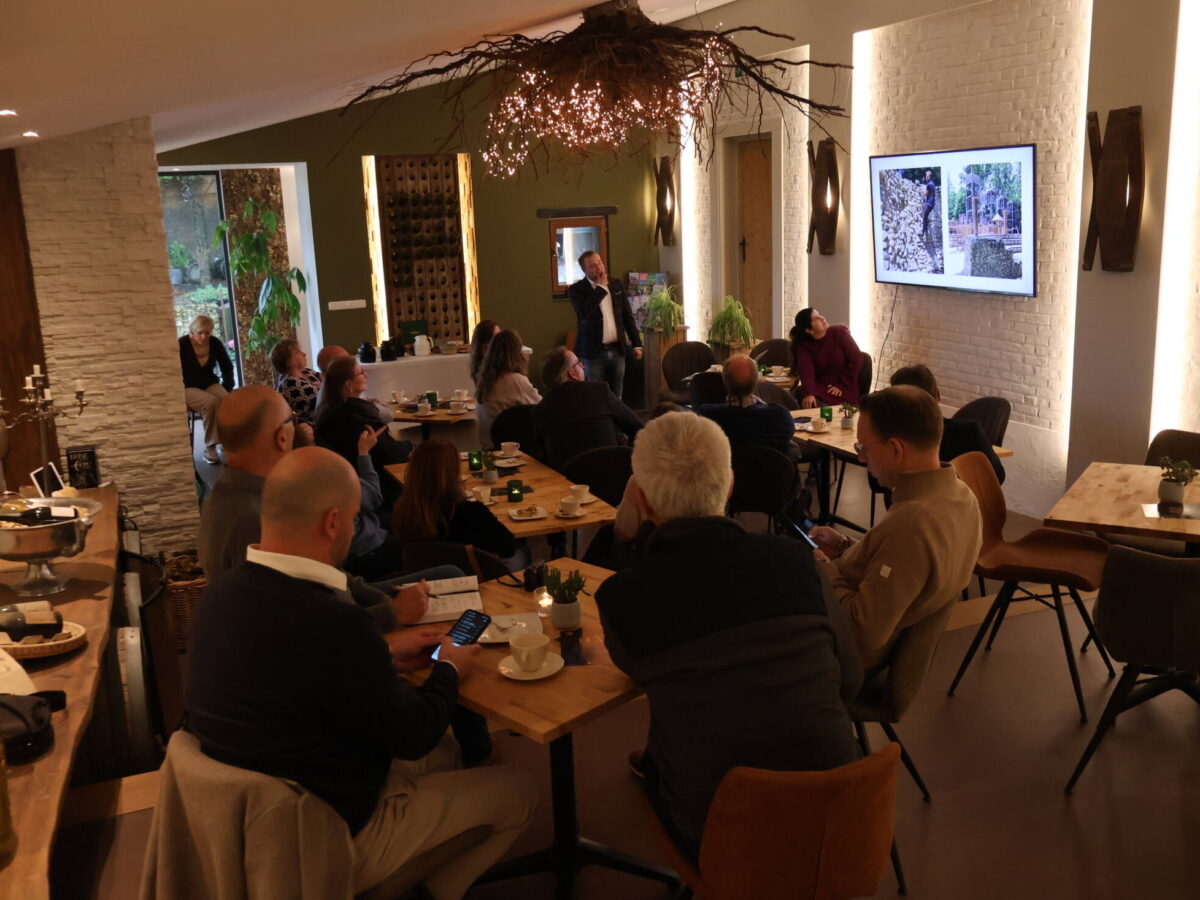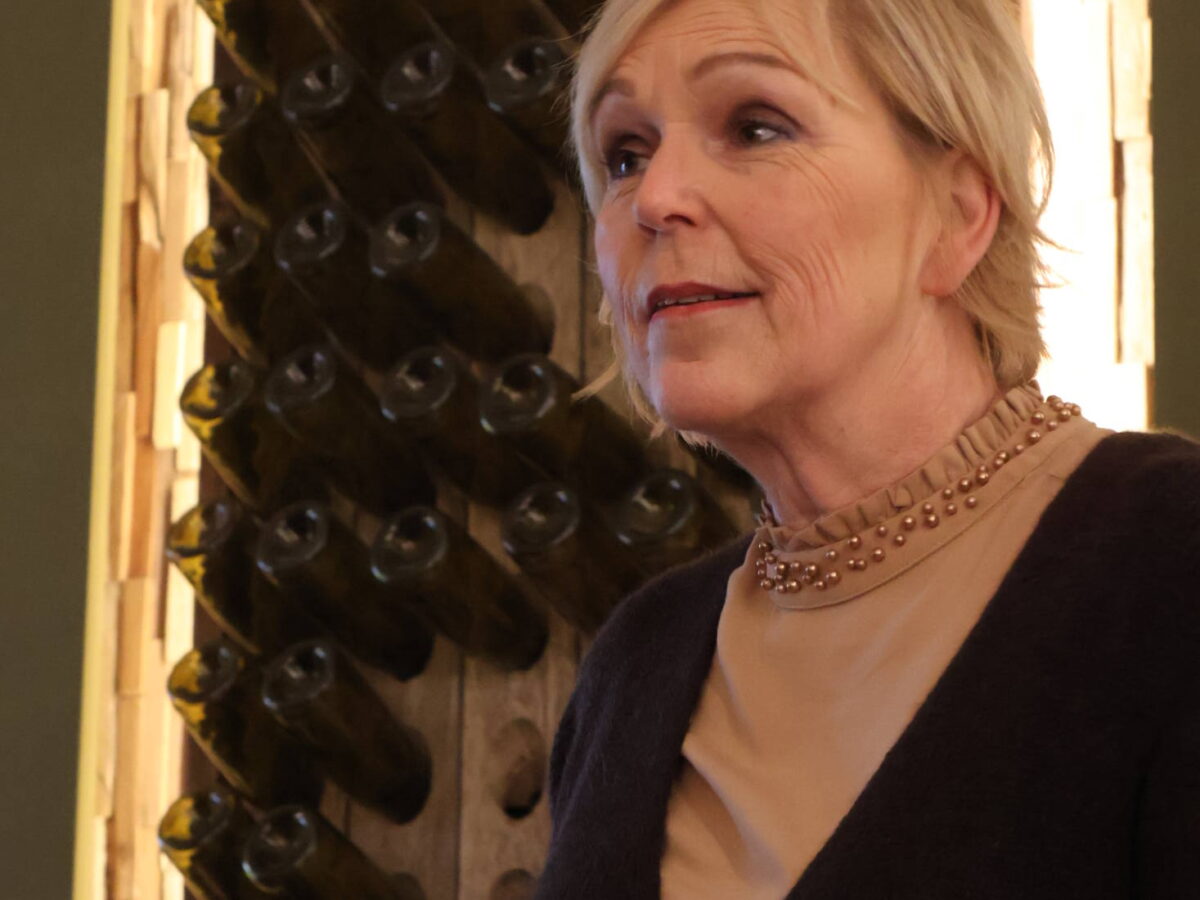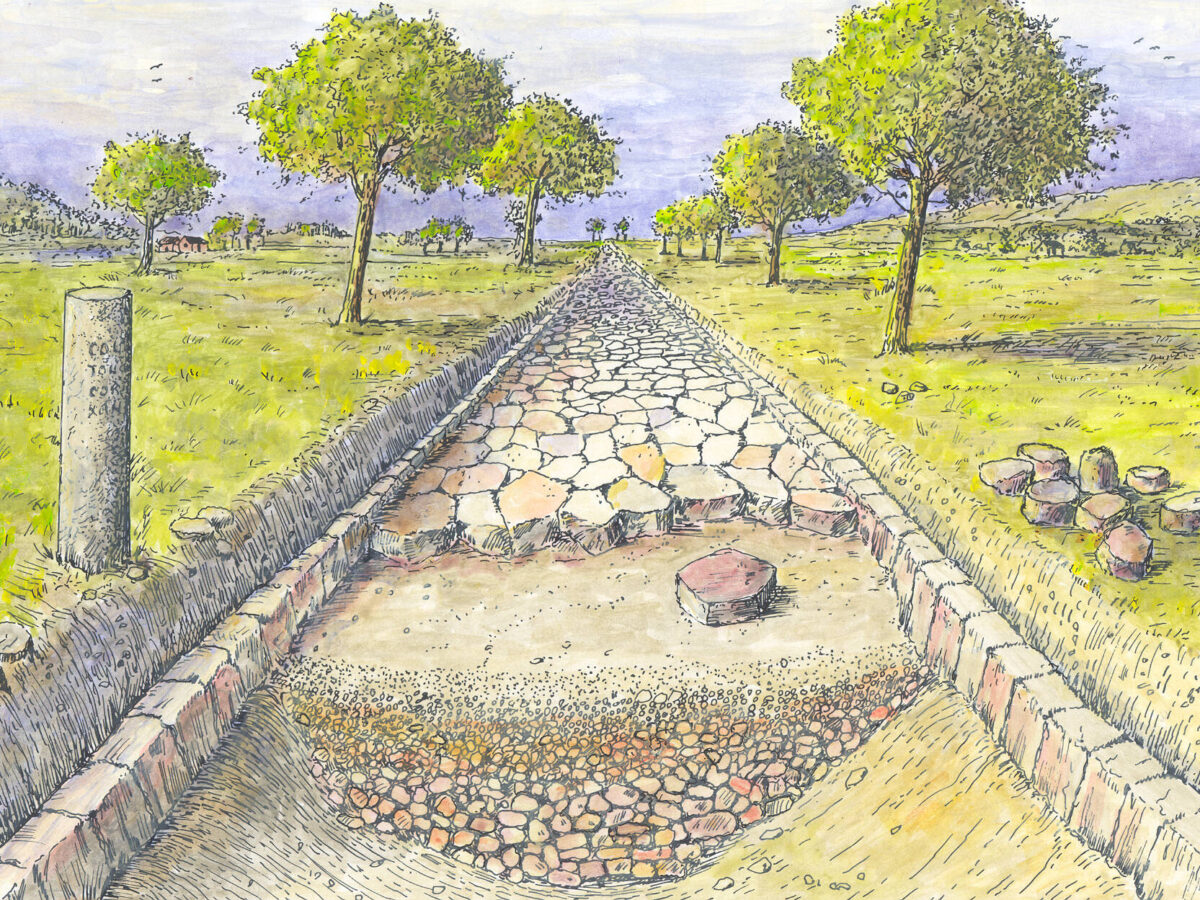Via Belgica Aims to Offer More Immersive Experiences
Author: Harry Lindelauf
Photography: Anja Neskens

The meeting in the reception room of Wijngoed Fromberg was opened by Bas Vervuurt, a Via Belgica Friend and representative of the Kunrader limestone quarry. It is well known that the Romans already used Kunrader stone, including for the construction of the Villa Ten Hove in Voerendaal and the Roman baths in Heerlen. Today, Kunrader stone is once again being quarried and used as a building material for renovation and new construction projects. The most modern application currently being developed is the use of 3D printers that process fine-grained residual material from the quarry.
Viticulture, too, has Roman origins, and it is this ancient tradition that Wijngoed Fromberg revived when it began in 1991. Carmen Soomers of the winery introduced the wines produced in Ubachsberg to the Friends of Via Belgica.
Via Belgica Steps Up Its Efforts
Over the coming years, the Via Belgica project will intensify its activities — creating new “wow” moments for visitors, fostering cross-border collaboration in the Euregio, and giving more space to scientific research.
This was announced by project leader Anja Neskens at Wijngoed Fromberg during a meeting with the Friends of Via Belgica.
The strengthened strategy for the period up to 2027 revolves around seven key themes:
- Programming
- Experience
- Education
- Research
- Euregio
- Communication
From 2024 onward, the project — a collaboration between the Province of Limburg and eight municipalities — will work with a fixed annual program aimed at families with children aged 6 to 12 and visitors aged 55 and older.
In addition, Via Belgica will expand its reach across the Euregio. The website, Via Belgica app, walking maps, and audio tours will therefore also be available in German and French.

Real Romans Come to Life
To share the Roman history of the region more vividly, Via Belgica will focus even more on storytelling. This Christmas season, eight Romans, Batavians, Gauls, and Germans will be brought to life through artificial intelligence.
Families will receive special attention through an educational program titled “Discover the Roman in Yourself.” In addition, the offers for walkers and cyclists will include more experiential and surprising elements. This year, new ideas have been developed for innovative landscape features within the participating municipalities.
These proposals will soon be presented to the local councils for consideration.
Via Belgica Symposium
A new aspect of the 2024–2027 policy plan is a renewed focus on scientific research, both nationally and internationally. For instance, Via Belgica is exploring cooperation with the “Constructing the Limes” project.
Every four years, Via Belgica intends to organize a symposium where researchers can exchange their latest insights — accompanied by a Via Belgica Award. If it is up to the project team, there will also be special attention for research and test excavations in South Limburg and across the border, aimed at determining the exact route of the Roman road between Cologne and Boulogne-sur-Mer.
The Via Belgica project will step up its efforts in the coming years, introducing new “wow” moments for visitors, strengthening cooperation within the Euregio, and creating more room for scientific research.— Anja Neskens

